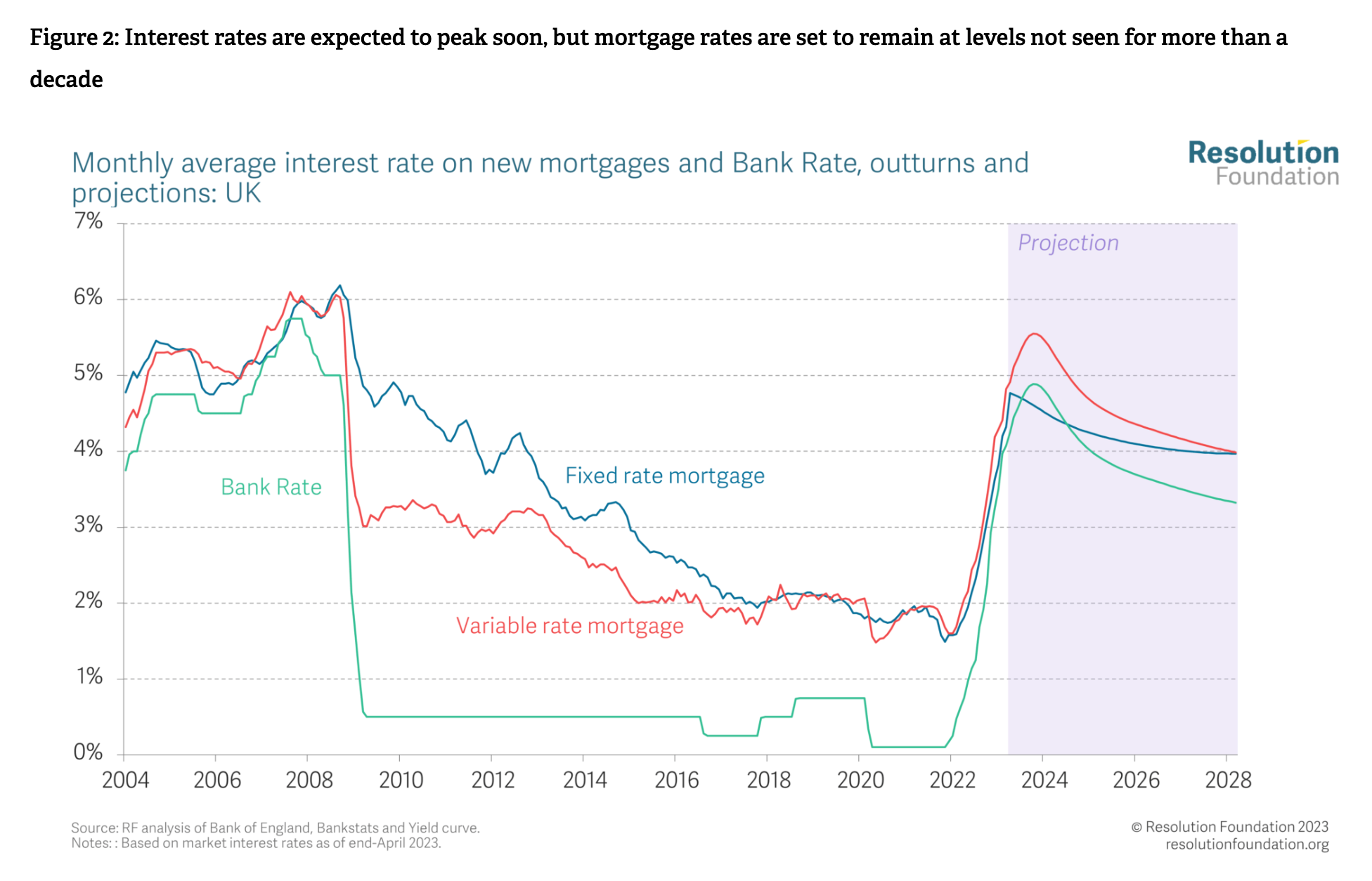The long road down for mortgage rates
Making sense of the latest trends in property and economics from around the globe.
4 minutes to read
The super prime recovery
London’s £10 million-plus (super-prime) property market enjoyed a long overdue recovery during the twelve months through March. Buyers spent £3.1 billion on 161 properties, up from £2.5 billion the previous year, making it the strongest year since 2016, according to Knight Frank data released late last week.
The political uncertainty that reigned following the EU referendum in 2016 had started to dissipate following the election of a majority government in 2019, but the Covid-19 pandemic put the recovery on hold. Last year's resumption of international travel from many parts of the world untethered a large chunk of pent up demand.
“After everything that has happened in recent years, London is still highly-regarded by global buyers,” says Paddy Dring, global head of prime sales at Knight Frank.
Issues that are particularly relevant to the super-prime market, such as the taxation of wealth and property and the status of non-doms, are likely to come under growing scrutiny as the next UK general election approaches, likely in 2024. You can read more from Tom Bill here.

The long way down
We talked last week about the tricky choices that borrowers face following the Bank of England's decision to raise the base rate to 4.5%. Five-year fixed-rate products are expensive relative to two-year fixed-rate mortgages and trackers, which are both priced at a similar premium to the base rate. For most borrowers, the choice means taking a view on where you think interest rates will move during the next two years, which is particularly difficult amid the prevailing uncertainty.
A growing number of borrowers will face similar quandaries as the year progresses. Almost half of mortgage holders are yet to refinance since the Bank of England started raising interest rates, and about 1.6 million households will see their fixed rate deal expire this calendar year. Those households will face an average increase in their annual mortgage bill of around £2,300 if they re-fix, according to calculations published by the Resolution Foundation think tank over the weekend.
The figures illustrate why activity is unlikely to return to the extraordinary levels we saw in recent years for some time. The market is recovering quickly from the mini-budget, but there will be a limit. The Bank Rate is expected to fall by just 1.25 percentage points in the three years after its peak to reach around 3.5 per cent towards the end of 2026. That's projected to leave the average rate on new mortgages at just over 4%, a level not seen in more than a decade.

BTR tailwinds
The UK's build-to-rent sector enjoys various tailwinds. Tight supply is driving rents higher amid a structural shortfall of quality homes. The value of the market for professionally managed rental accommodation is about £56 billion, up from £35 billion in 2019, according to our calculations. We think that figure could nearly double to £128 billion by 2028.
Grainger, the UK's largest listed residential landlord, said late last week that its net rental income had expanded 12% during the half year through March, supporting a 10% dividend increase. Its investment focus and cluster strategy in the top regional towns and cities in England and Wales has proven to be the right focus, the company said.
"These markets remain one of the most investment friendly residential rental markets globally with no rent controls, and there is a strong political consensus on the need for more housing supply and investment. The long-term market opportunity in the 5m household UK rental market is significant, as the shift in favour of large-scale, institutional professional landlords accelerates," the group said in the statement.
The difficulties facing landlords are worsening imbalances between supply-and-demand, and there appears to be little political appetite at this stage to provide relief to that side of the sector. Lenders are providing some support through product innovation, such as reducing longer term fixed rates and adding larger arrangement fees, which boosts the amount that landlords can borrow, but it's still tough out there.
“They are actually leaving the market. That is what is exacerbating the supply-and-demand imbalance,” Grainger chief executive Helen Gordon told the FT. “The reason they are leaving is increased regulation, increased taxation and, probably for them, rising interest rates that they can’t deduct from their profits.”
In other news...
From our team - Tom Bill on the unintended consequences of using the UK housing market as a political football, Chris Druce on the super-prime country market's record year, and rising supply in Edinburgh, Kate Everett-Allen on the pound's new high against the euro, and finally, Stephen Springham on retail's better quarter than anyone dared hope.
Elsewhere - Hong Kong mortgage battle sees banks go big on cash handouts (Bloomberg), BoE's Pill says 'there may be more work to do' to lower inflation (Reuters), and finally, the greatest wealth transfer in history is here, with familiar winners (NYT).